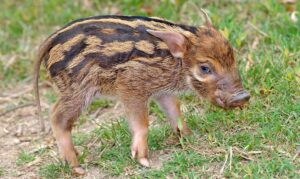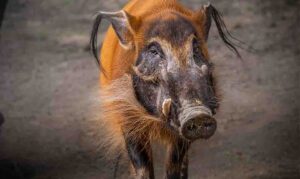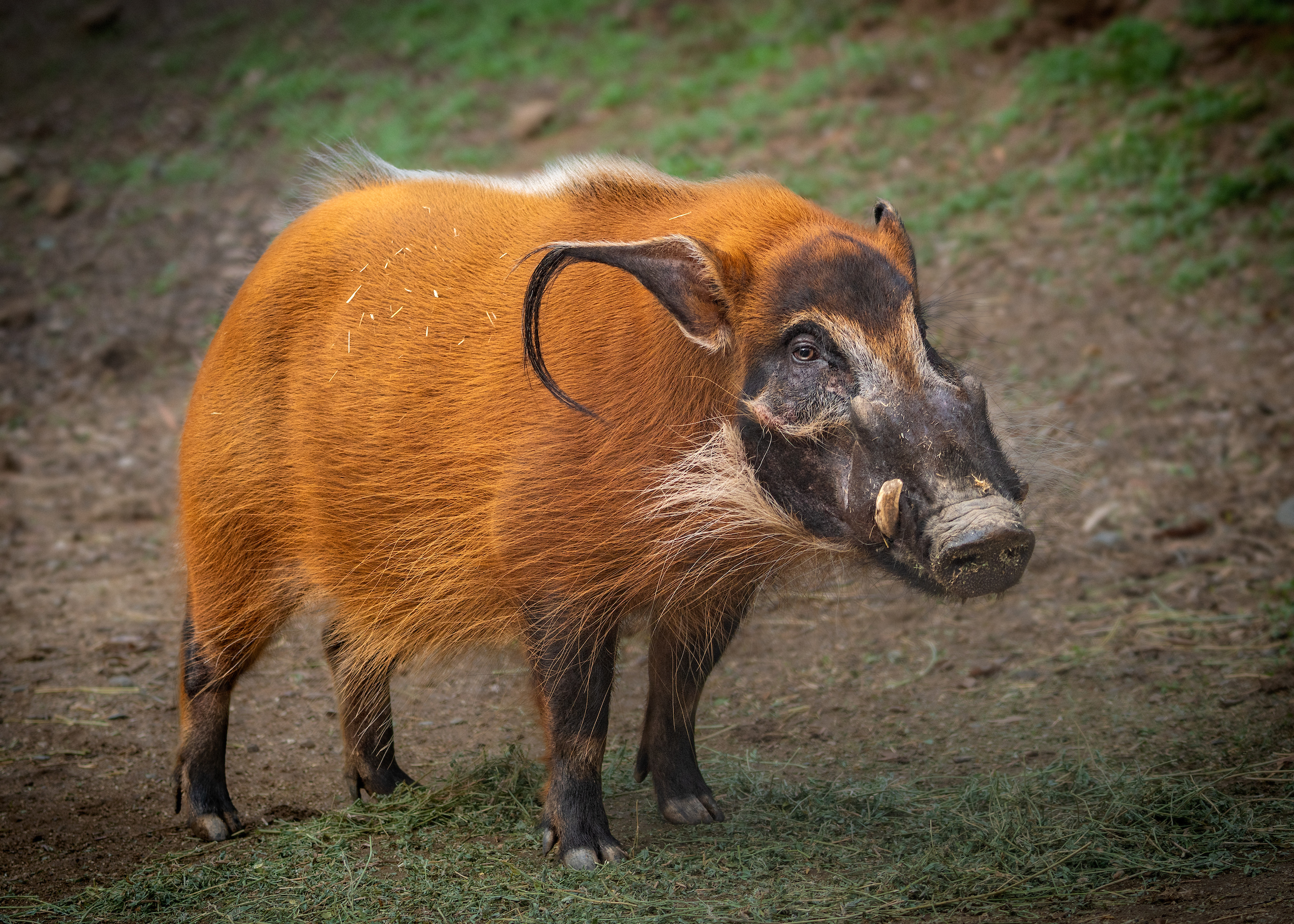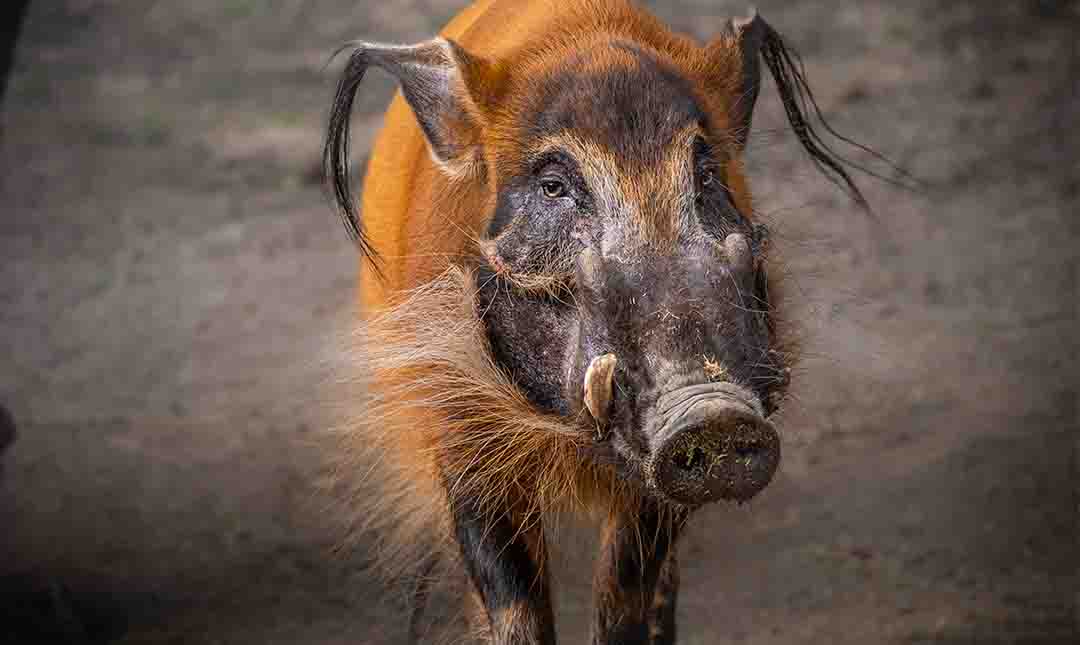About
Pigs, including red river hogs, are known for their intelligence and memory. Possessing an excellent sense of smell, they sniff continuously as they search for food, using the disc-like end of their snouts to dig up roots and grubs. Red river hogs love figs, mangoes, guava, avocados, pineapple, and papaya, and will follow baboons, chimpanzees, and elephants to pick up dropped fruit. They will even eat elephant dung for the seeds.
Pigs are happy in mud! To cool down, they seek out water or mud for wallowing, which also helps control parasites. Red river hogs are good swimmers and fast runners, active mostly at night. Gregarious, they live in groups of six to ten pigs called “sounders” that are made up of a dominant male (boar), a female (sow), and their offspring. Sows are pregnant for about four months and give birth to a litter of three to four piglets that are reddish brown and striped for camouflage. Sows nurse the piglets for about three months, and then the dad takes over caring for the young. At six months, the pigs are on their own. Red river hogs’ main predators include leopards, lions, spotted hyenas, eagle, rock pythons, and humans. If threatened, the tassels on these pigs’ ears and the hair on their faces and manes straighten to make the animal appear larger and more threatening to predators.


Habitat
Red river hogs live in the forests, savannas, swamps, and grasslands of sub-Saharan Africa, from Senegal to the Congo Basin.
Diet
Red river hogs are omnivorous. Although roots, tubers, bulbs, and fungi are red river hogs’ main food sources, they also eat fruit, grass, herbs, eggs, insects, lizards, and carrion. They will also raid domestic crops.
Physical Characteristics
This species has a body length of up to five feet and weight ranges between 100 and 265 pounds. Males are slightly larger than females. Red river hogs’ lifespan in the wild and in human care is the same, about 15 to 20 years.
LOCATION WITHIN THE ZOO
You’ll find this animal on the hillside in the Africa section. See Zoo Map.



